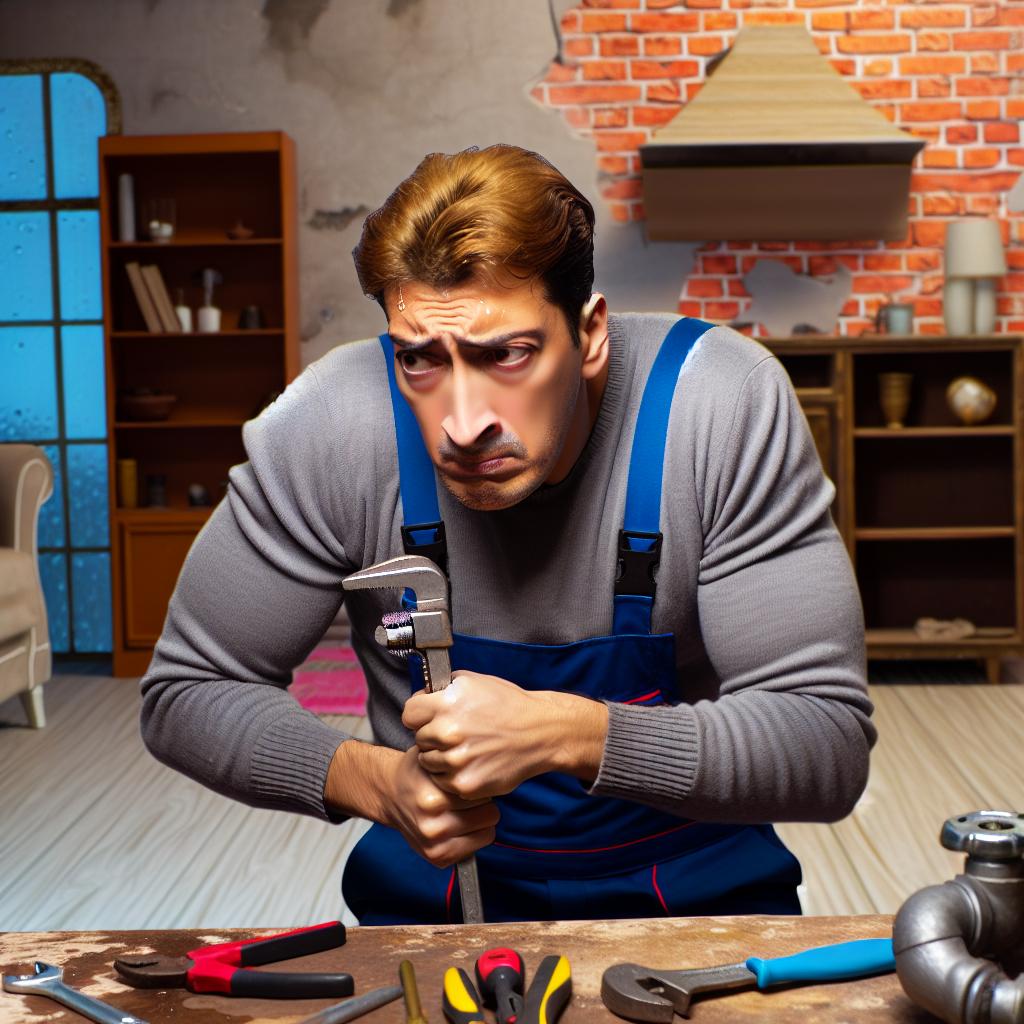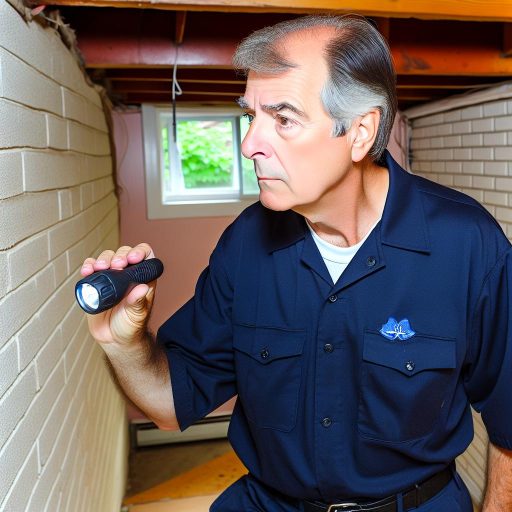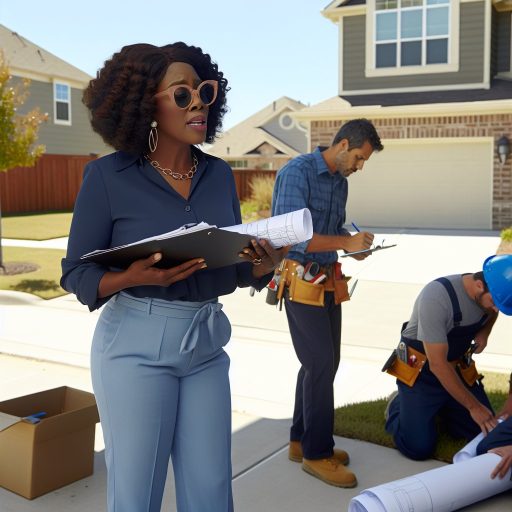Understanding Basic Plumbing Repairs
Leaky Faucets
Leaky faucets are a common issue in many rentals.
They can waste a significant amount of water over time.
Resolving this issue is often straightforward.
First, turn off the water supply underneath the sink.
Next, remove the faucet handle using an appropriate tool.
You may need to remove a decorative cap to access the screw.
After that, take out the retaining nut with a wrench.
Now, replace the washer or O-ring inside the faucet.
Reassemble the faucet and turn the water supply back on.
Check for any leaks after reassembly.
Running Toilets
A running toilet can be a nuisance for tenants.
It may also increase water bills significantly.
Start by checking the float mechanism inside the tank.
Adjust the float to ensure it shuts off at the correct water level.
If the toilet continues to run, inspect the flapper valve.
This component may need to be replaced if it is worn out.
To replace it, turn off the water supply to the toilet.
Remove the chain from the flapper and take out the old flapper.
Install the new flapper and reconnect the chain properly.
Turn the water supply back on and test the flush.
Preventative Measures
Regularly checking plumbing fixtures can prevent major issues.
Encourage tenants to report problems immediately.
Educating tenants on minor repairs can also help.
Consider providing basic DIY repair guides for simple issues.
Maintaining good communication with tenants supports a positive relationship.
Be proactive about scheduling regular maintenance checks.
Essential Electrical Fixes
Replacing Light Fixtures
Replacing light fixtures is a valuable skill for any landlord.
First, ensure the power is turned off at the circuit breaker.
Next, remove the old fixture carefully.
Disconnect the wires, taking note of where each wire connects.
Then, attach the new fixture’s wires.
Secure the fixture to the ceiling or wall as needed.
Finally, restore power and test the new fixture.
Installing GFCI Outlets
Installing Ground Fault Circuit Interrupter (GFCI) outlets enhances safety.
Start by switching off the power at the circuit breaker.
Remove the existing outlet carefully from its box.
Note the wiring, and disconnect the old outlet.
Connect the new GFCI outlet according to its markings.
Ensure all connections are secure and the outlet is properly mounted.
Turn the power back on and test the outlet with a GFCI tester.
Safety Precautions
Always use safety gear when working with electricity.
Keep a flashlight handy for dark areas.
Additionally, consult a professional if you’re unsure about the process.
Proper precautions can prevent accidents and injuries.
Common HVAC Maintenance
Air Filter Replacement
Regularly replacing air filters is essential for effective HVAC operation.
Dirty filters reduce airflow and decrease efficiency.
For convenience, check filters every month or as needed.
Typically, a standard replacement takes just a few minutes.
First, turn off the HVAC system to ensure safety.
Next, locate the air filter access panel.
Remove the old filter carefully to avoid dust spread.
Insert the new filter, ensuring it fits securely.
Pay attention to the airflow direction indicated on the filter.
Finally, restart the system and check for proper airflow.
Thermostat Adjustments
Adjusting the thermostat helps regulate indoor temperatures efficiently.
Ensure the thermostat is set to a comfortable temperature.
Use programmable thermostats to save energy when away.
For best performance, calibrate the thermostat periodically.
Begin by checking the thermostat’s location; it should be free from obstructions.
Test the system after adjustments to confirm desired temperature settings.
Also, consult the user manual for specific calibration instructions.
Regular adjustments can lead to substantial energy savings.
Consider scheduling a professional maintenance check annually.
Delve into the Subject: Lease Agreements for Section 8 Tenants
Drywall Repairs: Patching Holes and Fixing Cracks
Understanding Drywall Damage
Drywall can easily suffer damage from everyday activities.
Accidental impacts can create unsightly holes and cracks.
Understanding the types of damage helps in selecting repair methods.
Types of Damage
Common types of drywall damage include small holes, large holes, and cracks.
Small holes usually result from nails or screws.
Large holes can be caused by accidents or plumbing repairs.
Cracks often occur due to settling or humidity changes.
Gathering Necessary Materials
Before starting repairs, gather all necessary materials.
You will need spackling compound, a putty knife, and sandpaper.
Additionally, have a drywall patch and joint tape on hand.
Patching Small Holes
Start by cleaning the area around the hole.
Apply spackling compound with a putty knife.
Spread it evenly over the hole, feathering the edges.
Allow the compound to dry according to package instructions.
Once dry, sand the area smooth with fine-grit sandpaper.
Repairing Large Holes
Large holes require a different approach to repair.
First, cut a piece of drywall to use as a patch.
Secure the patch with screws to the drywall studs.
Next, apply joint tape around the patch edges.
Cover the tape with joint compound, feathering the edges.
Let it dry, then sand it smooth for a seamless finish.
Fixing Cracks
Cracks in drywall can often be repaired quickly.
Start by widening the crack slightly with a utility knife.
Apply joint compound into the crack with a putty knife.
Press joint tape over the compound if the crack is wide.
Cover the tape and surrounding area with additional compound.
After drying, sand to ensure a smooth surface.
Final Steps and Touch-ups
Once repairs are finished, inspect your work closely.
Apply a primer coat before painting for best results.
After priming, paint the repaired area to match the rest of the wall.
Regular maintenance can prevent future drywall damage.
Find Out More: How to Market Rental Properties With Google Ads and PPC Campaigns
Basic Carpentry Skills
Fixing Doors
Doors often need adjustments for smooth operation.
Start with checking the hinges first.
If the door doesn’t close correctly, tighten the screws in the hinges.
Sometimes, you may need to replace old hinges.
Use a chisel to remove any wood shavings obstructing the door.
Always keep a sanding block handy for minor adjustments.
If the door squeaks, oil the hinges to eliminate noise.
Fixing Windows
Windows can become drafty and require sealing.
Inspect the window frames for gaps or cracks.
Use caulk to fill any visible gaps effectively.
Replace broken or cracked panes as needed.
Always wear safety gloves when handling glass.
Lubricate track systems for sliding windows.
Consider installing weather stripping for better insulation.
Repairing Cabinets
Cupboards can suffer from rough usage over time.
Start by examining the cabinet doors and drawers.
Tighten all screws and hinges to secure stability.
If drawers stick, check the alignment first.
Adjust the slides or tracks as necessary.
Use wood glue for any loose joints and clamp them until dry.
Finally, consider refinishing surfaces for a fresh look.
Uncover the Details: Property Inspections for Vacation Homes

Painting and Finishing Techniques
Touch-Ups
Touch-ups are essential for maintaining the aesthetics of your property.
They can help cover minor scuffs and scratches efficiently.
Begin by cleaning the surface to remove dust and dirt.
Select a matching paint color for seamless repairs.
Use a small brush or roller for precise application.
Apply the paint thinly, gradually building up coverage as needed.
Allow each coat to dry fully before adding another layer.
Finish by feathering the edges for a smooth transition.
Full Repaints
Full repaints can refresh your property’s appearance completely.
Start by choosing high-quality paint for durability.
Select colors that appeal to potential tenants.
Prepare the surfaces by cleaning and repairing any imperfections.
Use painter’s tape to protect areas that should not be painted.
Priming walls can improve color adhesion and coverage.
Apply the paint evenly, using a roller for larger areas.
Use a brush for edges and corners for a neat finish.
Consider using two coats for a professional look.
Allow sufficient drying time between coats.
Finishing Techniques
Finishing techniques can elevate the overall look of painted surfaces.
Consider using a satin or eggshell finish for walls.
These finishes offer durability and are easier to clean.
For trim and moldings, a semi-gloss finish provides a polished look.
Always ensure good ventilation when painting indoors.
Use drop cloths to protect your flooring and furniture.
Finally, clean brushes and rollers immediately after use.
Uncover the Details: State-Specific Landlord Tenant Laws and Regulations
Outdoor Maintenance: Fence Repairs and Landscaping Tricks
Importance of Outdoor Maintenance
Outdoor maintenance plays a crucial role in property management.
Well-maintained outdoor areas enhance curb appeal and tenant satisfaction.
Additionally, it prevents costly repairs in the future.
Fence Repairs
Fencing is essential for property security and aesthetics.
First, inspect the fence regularly for damage.
Replace any broken boards or panels promptly.
Make sure to reinforce loose or leaning sections.
Use weather-resistant materials for long-lasting repairs.
Repair Techniques
Start by removing damaged sections of the fence.
Measure and cut new boards to fit correctly.
Secure the new boards using galvanized nails or screws.
Apply wood preservative to treat the new parts.
Finish by painting or staining for uniformity and protection.
Landscaping Tricks
Healthy landscaping enhances property value significantly.
Start with regular mowing and trimming to maintain neatness.
Plant seasonal flowers to add color and attract tenants.
Additionally, consider using mulch to control weeds and retain moisture.
Opt for native plants as they require less maintenance.
Efficient Watering Practices
Watering is critical for a vibrant landscape.
Implement a drip irrigation system to deliver precise water amounts.
Water early in the morning to reduce evaporation losses.
Group plants with similar watering needs to improve efficiency.
Routine Maintenance Tips
Schedule seasonal cleanups to remove debris and leaves.
Regularly check for pests or diseases affecting plants.
Utilize composting to recycle organic waste and boost soil health.
Finally, maintain tools and equipment for effective upkeep.
Safety and Compliance: Ensuring Smoke Detectors and Carbon Monoxide Alarms are Functional
Importance of Safety Devices
Safety devices are critical in any rental property.
They protect tenants from potential hazards.
Moreover, these devices fulfill legal compliance requirements.
Checking Smoke Detectors
Regularly check all smoke detectors in your property.
This simple step can save lives in emergencies.
Replace batteries at least once a year.
Consider using 10-year lithium batteries for convenience.
Inspect the detectors for wear and tear periodically.
Testing Functionality
Test each smoke detector monthly.
Press the test button to ensure it functions properly.
If the alarm does not sound, replace the unit immediately.
Document your testing schedule to keep track of maintenance.
Maintaining Carbon Monoxide Alarms
Carbon monoxide alarms are equally important.
Place one near sleeping areas for maximum protection.
Check the expiration date on old alarms regularly.
Generally, these alarms need replacement every five to seven years.
Regular Testing Practices
Just like smoke detectors, test CO alarms monthly.
Replace batteries annually for continuous safety.
If an alarm triggers, evacuate immediately and call for help.
Compliance with Local Laws
Landlords must comply with local safety regulations.
Familiarize yourself with state laws regarding safety devices.
Many areas require installation of both smoke and CO alarms.
Failure to comply can result in legal actions or fines.
Keeping Records
Maintain a log for all checks and maintenance activities.
This documentation provides proof of compliance.
It is useful for both future tenants and inspections.
Resources for Landlords
Online resources can offer guidance on local laws.
Consult with local fire departments for more safety tips.
Networking with other landlords can provide valuable insights.
Additional Resources
If my landlord delays repair on our washer and dryer, can I hold on …
Solved: Landlord – Deduct property management and repair cost?




